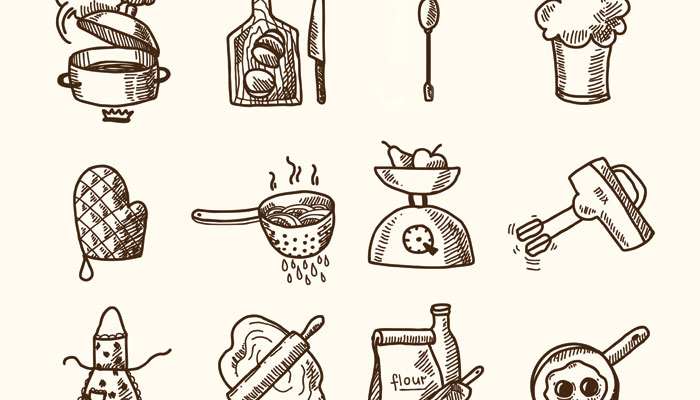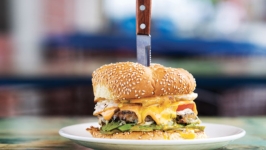Cook and Bake Like the Pros with Our Kitchen Glossary
AL DENTE
In Italian, “al dente” literally means “to the tooth.” Cooking pasta “al dente” offers a slight resistance when bitten into — the pasta is firm, but not hard. Our editors agreed the 8-10 minute range is perfection. Bill Fuller, corporate chef at big Burrito Restaurant Group, advises, “don’t try to cook fresh pasta ‘al dente.’ Just cook it until it floats, then strain it.”
BASTE
Basting is an essential technique for preventing meat and other foods from drying out. Using olive oils, vegetable stock, marinade, or wine, brush or spoon your main event periodically throughout the cooking process. When talking turkey, Fuller says to baste as often as you can remember to. “And it still probably isn’t enough,” he adds.
BLANCH
Typically in reference to vegetables or fruit, blanching is briefly cooking food (approximately three minutes) at a rolling boil and immediately tossing it into cold water to stop the cooking process. You can utilize this technique to partially cook vegetables and fruits before freezing, or to loosen their skins. Blanching also brightens the food’s color and helps retain vitamins!
BRAISE
We’re talking about a warm, hearty stew or flavorful pot roast, here. The first step is to brown the meat on either side. Lift the browned bits on the bottom of the pan with a splash of liquid, such as wine, vinegar, beer, stock, or water. Add spices, herbs, vegetables, and other necessary ingredients. Then, let it go! Cover your pot with a tight-fitting lid to maintain moisture, then cook it in the oven, or on the stovetop, at a low temperature.
DREDGE
This technique is used to coat your poultry, fish, or meat with flour, egg, and breadcrumbs or cornmeal to give that nice, crispy coating. Fuller suggests, “Always work using a bigger dish than you think you’ll need because you’ll spray the coating material around the kitchen anyhow. The bigger bowl decreases the amount on the floor.” He adds, “Switch hands if you are going from a dry ingredient into a wet ingredient, and back into a dry.”
JULIENNE
This technique, of French origin, means to cut into thin strips. “Cut the item into slices, then cut across the slices to make little matchsticks,” says Fuller. “Julienning leeks is a total pain in the butt — especially if you want them all the same. Just dice stuff. It’s easier.”
KNEAD
When baking bread, this process is done to strengthen the gluten. It enables bread to hold in gas bubbles formed by leavening by stretching and expanding the gluten. By hand, it’s done by pressing and folding. If using a stand mixer, 8-10 minutes is the general standard. Tip: Give a firm poke to the ball of dough — if the indentation fills back quickly, your work here is done.
+ Fred Hartman, owner of BreadWorks, has been working with bread for 36 years! He says the process of cooling your bread correctly, post-bake, is key to avoiding a soggy crust and successfully creating a loaf with “applicable squeeze, a nice crumb, and crust that doesn’t fall off.” To achieve this texture, cool your bread at an even temperature using a fan for one hour. “Our temperature never goes below 52ºF or above 78ºF,” says Hartman.
POACH
This moist-heat cooking technique involves submerging food in a liquid that is just barely simmering. Typically used with eggs, chicken, fish, and/or fruit, poaching is a healthy, low-fat alternative to cooking foods.
Fuller’s Top Tip: Buy a copy of Julia Child’s “The Joy of Cooking.”
big Burrito Restaurant Group, bigburrito.com.
BreadWorks, 2110 Brighton, North Side. 412.515.0157. breadworkspgh.com.







